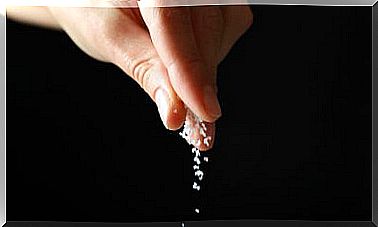Sunscreens: Discover The Difference Between SPF 15, 30 And 50
When summer arrives and you must buy a safe sunscreen, it takes a while to choose the ideal one for you. In the end, you are likely to choose an inexpensive one or the one with the highest SPF because you believe it will protect you more. But do you know exactly what an SPF is and what is the difference between each number?
Choosing a sunscreen is not something as simple as going to the store and buying the first product you find. It is something that you should not take lightly and you should review very well, because each sunscreen is designed to respond to different needs.
What is a sunscreen?
Sunscreen or sunscreen is a product that reduces the risk of burns caused by exposure to the sun. This product has several presentations such as cream, oil, gel and spray.
Each sunscreen has a protection factor, which is a number ranging from 8 to 100. This is normally assigned to products in multiples of 5. The most common numbers are 15, 30, and 50+.
What are the sun protection factors and how are they different?

An SPF, named for its acronym in English “Sun Protection Factor”, is the time during which the sunscreen will keep your skin protected from sunburn. That is, according to the guide of the Spanish Association against Cancer, it is the degree of protection against UVB rays.
The sun protection factor multiplies the natural defense capacity of your skin against the sun’s rays. This means that you will be able to stay in the sun longer before the appearance of the erythema or redness before the burn.
If your skin tends to turn red after 15 minutes of unprotected sun exposure and you wear a sunscreen with SPF 15, the time will be multiplied by the factor number. That is, 15 minutes by 15 will give a protection time of about 225 minutes. Choosing the best SPF for you depends on many factors, including:
1. Skin type against sun reaction
According to the World Health Organization, according to the Fitzpatrick scale there are 6 phototypes, ranging from white skin to very dark skin. The lighter it is, the higher the SPF needs to be to protect it.
If, on the other hand, your skin is dark, you have more natural protection against the sun, so you don’t need such a high SPF.
2. Type of skin according to its physicochemical characteristics
Not all skins are the same. Therefore, not all sunscreens and SPF are beneficial for certain skin types. If your face is acne it is recommended to apply a gel sunscreen with an SPF higher than 30. If your skin is normal you can use an SPF 15.
3. Where will you go and what clothes will you wear?
If you go to the beach and are going to be out in the sun for a long time, use SPF 50+. If you will be in a cloudy city or in a forest, an SPF 15 will suffice if you wear clothing that covers your extremities and a hat.
Are the best sunscreens those with more than 30 SPF?
The answer is no. As the numbers logically indicate, the higher it is, the greater the protection, but it is relative. The important thing is that you know how to apply the product well. Do not think that having a higher SPF is only necessary to apply sunscreen before leaving home. In fact, this study from the Universidad Nacional Agraria La Molina (Peru) ensures that protectors of 50+ show practically the same results as the lowest ones.
Choosing which is the right SPF for you should respond to the characteristics of your skin, as well as the presentation of the product you use. You can apply a cream sunscreen for your face with an SPF 30 and a spray for the body with an SPF 15 if you are not going to be so exposed to the sun from the neck down.
The truth is that, as we already mentioned, even if you choose an SPF of 15 or 50+ there will not be too much difference if you do not use it correctly and if the protector is not broad spectrum. This means that sunscreens must form a barrier not only against UVB rays, but also against UVA.
What are broad spectrum sunscreens?
Broad spectrum sunscreens are the most recommended to take care of your skin. In reality there is no product that acts as a total protective barrier against solar radiation.
All protect to a lesser or greater extent, but never fully. However, if your protector is broad spectrum, your skin will be more protected.
There are many sunscreens that only protect you against UVB rays. And what about UVA? With a regular protector, even if you are protected against burns, the star king will still damage the inner layers of your skin.
UVA rays have free passage to your dermis and are the cause of aging. In addition, they increase the risk of skin cancer. Therefore, if you will be at the beach or pool for a long time, the ideal is that your sunscreen has SPF 50+ and is broad spectrum.
All sunscreens can keep you safe from sunburn. But the next time you go to choose one, keep the factors described above in mind. This will help you choose the best SPF for your particular case and will guarantee better care while you enjoy your vacation.









